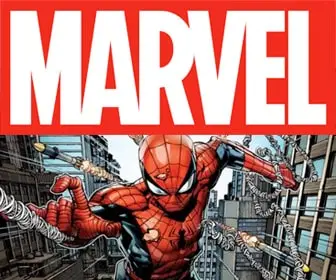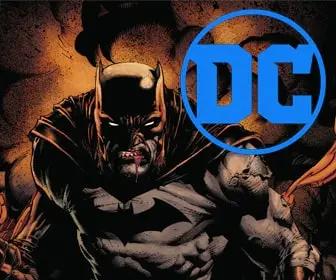
George Perez’s Transformative Teen Titans Era
George Pérez is a legendary figure in the world of comic books. He is known for his detailed artwork and engaging storytelling. One of his most famous works is on the series “Teen Titans,” which he transformed into one of the most popular and influential comic books of its time.
“Teen Titans” features a group of young superheroes who team up to fight crime and face personal challenges. Before George Pérez joined the series, it was not as well-known or successful. However, with his creative input, “Teen Titans” became a hit, attracting fans from all over the world. This article will explore how George Pérez made “Teen Titans” a standout series and why his work is still celebrated today.
Early Career and Joining Teen Titans
George Pérez started his career in comics in the early 1970s. He quickly became known for his clear, detailed art and ability to draw exciting action scenes. Early on, he worked on several popular titles for Marvel Comics, like “The Avengers,” where he helped bring the characters to life with his unique style.
In 1980, George made a big move to DC Comics. At that time, “Teen Titans” was a series that was not doing very well. DC wanted to revive it and make it appealing to a new generation of readers. They believed George Pérez was the perfect artist to make that happen.
George teamed up with writer Marv Wolfman to create a new version of “Teen Titans.” They introduced fresh characters and interesting stories that focused not just on action but also on the personal struggles and growth of the heroes. This new approach made “Teen Titans” a series that many people loved and followed. George’s incredible artwork and the deeper storytelling transformed “Teen Titans” from a fading series into one of the most famous superhero teams in comic book history.
Collaborative Dynamics
When George Pérez joined “Teen Titans,” he didn’t work alone. He teamed up with Marv Wolfman, a talented writer. Their partnership was a big reason why the series became so successful. George and Marv had a special way of working together that brought out the best in both of their skills.
Marv Wolfman was great at coming up with exciting and deep stories. He wrote plots that dealt with real-life issues like friendship, trust, and growing up, which made the characters very relatable to readers. George Pérez brought these stories to life with his art. He was able to draw expressive characters and dynamic action scenes that captured the emotions and intensity of Marv’s stories.
Together, George and Marv created a powerful and captivating world for the Teen Titans. Their ability to combine great writing with stunning visuals made each comic book issue a work of art that fans couldn’t wait to read. This teamwork not only made “Teen Titans” a hit but also set a new standard for how comic books could be made, showing that the collaboration between a writer and an artist is key to creating an engaging and beloved series.
Key Contributions and Innovations
George Pérez made several important contributions to “Teen Titans” that changed the way people saw comic books. His artistic style was unique and had a big impact on the series. George was known for his attention to detail. He could draw complex scenes with many characters, and each character would still stand out and look unique. This made the action scenes in “Teen Titans” very exciting and full of energy.
One of the most innovative things George did was how he designed the characters. He gave each Titan a distinct look that reflected their personality. For example, he made Raven mysterious and dark, while Starfire was bright and full of life. These designs helped readers quickly understand more about each character just by looking at them.
George also helped introduce more complex storylines in “Teen Titans.” He and Marv Wolfman worked together to create deeper, more thoughtful stories that went beyond simple good versus evil. They explored themes like betrayal, love, and the struggles of growing up. This approach made “Teen Titans” more than just a superhero comic; it became a series that dealt with real human emotions and challenges.
Additionally, George’s work on iconic story arcs, like “The Judas Contract,” brought new levels of drama and suspense to comic book storytelling. This story arc is famous for its plot twists and character development, and it is often listed as one of the best comic book stories of all time.
Through these contributions, George Pérez not only made “Teen Titans” a must-read series but also influenced the entire comic book industry to aim for higher standards in both art and storytelling.
Iconic Characters and Storylines
George Pérez and Marv Wolfman introduced several new characters in “Teen Titans” who quickly became fan favorites. These characters, like Cyborg, Raven, and Starfire, were not just superheroes; they had their own unique backgrounds and personalities that made them stand out.
Cyborg, or Victor Stone, is a young man who, after a serious accident, is transformed into a hero with advanced technology in his body. He struggles with his identity but finds a new purpose with the Titans. Raven is a mystical character with dark powers, who battles her own demons while helping the team. Starfire, an alien princess from another planet, brings a sense of wonder and a fierce fighting spirit to the team.
These characters, along with others like Nightwing, who grew out of his role as Batman’s sidekick to become a leader, enriched the “Teen Titans” universe. They made the stories more engaging because readers could see parts of themselves in these heroes.
One of the most memorable storylines that Pérez and Wolfman created was “The Judas Contract.” This story arc is a thrilling tale of betrayal, as the Titans face a deep betrayal from within their own ranks. It also marked the transformation of Dick Grayson into Nightwing, adding a significant development to his character. “The Judas Contract” was not only pivotal for its dramatic narrative but also because it showed how deep and complex comic book stories could be.
These characters and their adventures made “Teen Titans” a groundbreaking series. Each issue brought new challenges and growth for the Titans, making every comic not just a story about heroes fighting villains but a story about young people learning about themselves and the world around them.
Influence on Later Comics
George Pérez’s work on “Teen Titans” had a big impact on the world of comic books. His approach to storytelling and character development influenced many artists and writers who came after him. Comics began to include more detailed artwork and complex stories, similar to what George brought to “Teen Titans.”
Other comic book series started to focus more on the personal lives and emotional challenges of their characters, just like “Teen Titans” did. This made the stories more interesting and relatable. Readers could see heroes who had problems and feelings just like their own, which made the characters feel more real.
George’s way of creating thrilling action scenes with lots of details also became popular in other comics. Artists tried to match his style, adding more action and excitement to their pages. This made the comic books more visually appealing and fun to read.
Moreover, the success of “Teen Titans” showed other comic book creators that young superhero teams could be very popular. This led to the creation of new teams and stories that tried to capture the same magic that George Pérez and Marv Wolfman did.
Overall, George Pérez’s influence extended far beyond “Teen Titans.” His innovative ideas and artistic excellence helped shape the future of comic books, making them better and more engaging for everyone.
Legacy and Departure
George Pérez left “Teen Titans” after many successful years, but his impact on the series and comic books in general continues to be felt. His decision to leave was based on wanting to explore new projects and opportunities, but he left behind a legacy that has stood the test of time.
“Teen Titans” under George’s guidance became one of the best-selling comic book series. It won the hearts of countless fans and is often remembered for setting high standards in storytelling and artwork. The series not only became a favorite among comic book readers but also inspired TV shows and movies, bringing the characters and stories to an even wider audience.
George Pérez is celebrated for bringing depth and innovation to “Teen Titans.” His work helped transform the series into a richer and more engaging experience. Even after his departure, the standards he set continued to influence how “Teen Titans” stories were told. New artists and writers who joined the series often looked up to his work, striving to maintain the quality and creativity he had established.
Today, George Pérez’s contributions to “Teen Titans” are remembered as pivotal moments in comic book history. His vision and talent made “Teen Titans” not just a comic book but a landmark series that continues to inspire new generations of creators and fans alike.
Collectors
George Pérez’s tenure on “Teen Titans” is celebrated for its rich storytelling and iconic art. Here are five must-have comic book issues from his run that every fan should own:
- “The New Teen Titans” #1 (1980)
This is where it all began for George Pérez’s work with the Teen Titans. The issue features the formation of the new team, introducing characters like Cyborg, Raven, and Starfire alongside existing members. It’s pivotal for setting the tone and direction that would define their adventures. - “The New Teen Titans” #2 (1980)
This issue is critical for collectors as it marks the first appearance of Deathstroke (Slade Wilson), one of the most enduring and popular villains in the DC Universe, who becomes a significant antagonist for the Titans. - “The New Teen Titans” #39 (1984)
This issue is notable for the dramatic developments in the characters’ relationships, including the departure of Robin (Dick Grayson) from his role to eventually become Nightwing. It’s a key moment in Teen Titans history and a turning point for the character. - “The New Teen Titans: The Judas Contract” – Part 3 (“Tales of the Teen Titans” #44, 1984)
A pivotal issue in one of the most famous story arcs in comic book history, “The Judas Contract.” This issue features the full transformation of Dick Grayson into Nightwing and the shocking betrayals by Terra. It’s a must-have for its significant character developments and plot twists. - “The New Teen Titans” #50 (1985)
This anniversary issue not only celebrates the team’s history but also cements various relationships and dynamics within the team. It includes flashbacks, character developments, and setups for future stories, making it a rich, commemorative issue that reflects on their journey.
These issues represent key moments in the Teen Titans series under George Pérez, showcasing his artistic skill and storytelling prowess while also marking significant events in the team’s lore.
Denouement
George Pérez’s journey with “Teen Titans” is a remarkable chapter in the history of comic books. His artistic genius and innovative storytelling left a lasting impact on the series and the entire comic book industry. Through his work, George showed that comic books can be a powerful way to tell complex and engaging stories.
His legacy lives on in the many characters and storylines he helped create, which continue to be loved by fans around the world. “Teen Titans” under his direction became more than just a superhero team; it became a source of inspiration and a benchmark for creativity in comics.
As we look back on George Pérez’s contributions to “Teen Titans,” we celebrate not only a talented artist but also a visionary who pushed the boundaries of what comic books could be. His work will always be remembered as a key part of comic book history, teaching future artists and writers the importance of passion, creativity, and innovation.















